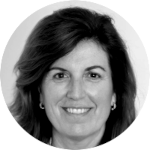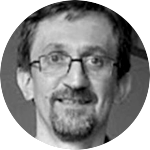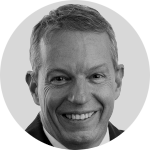
|
|
|
Keynote speakersFIMH 2023 will feature four keynote speakers:
Marta SITGES - Hospital Clínic de Barcelona, Universitat de Barcelona, Spain
Date: Tuesday, June 20th (9am) Title: How the heart adapts to exercise: is it always good? Abstract: Exercise training induces adaptative changes in the heart that are oriented to increase its performance. However, in some individuals excessive cardiac adaptation can lead to the development of abnormal substrates that may facilitate the occurrence of atrial arrhytmias or even sudden cardiac death. Understanding physiology of cardiac adaptation and recognizing early stages of pathological adaptation is key to prevent adverse events when practising sport, one of the best sellers to promote health in global populations. As many factors influence this response, computationals models and integrative approaches can be of clinical help to deeply understand these complex mechanisms. Short bio: Professor Marta Sitges is a senior consultant non-invasive cardiologist at the Cardiovascular Institute in Hospital Clinic and Professor of Medicine at the University of Barcelona, currently being the Director of the Cardiovascular Institute since October 2015. Her main clinical practice is related to clinical and interventional echocardiography, sports cardiology and heart valve disease. She has an extensive publication track in these fields with participation in leading National and International meetings, she has received more than 60 peer reviewed grants and directed multiple MD and PhD thesis. She has formerly been Head of Cardiac Imaging from 2013 to 2015 at this Institution and she is also responsible of the program of Sports Cardiology at FC Barcelona since 2009. She is also member of the Board of Directors and currently, President of the Heart Valve Society.
Alison Vander Roest - Michigan Engineering, USA
Date: Tuesday, June 20th (2.20pm) Title: Modeling altered cardiomyopathy mechanics and impact of myosin mutations across scales. Abstract: Mutations in beta cardiac myosin and other sarcomeric proteins cause hypertrophic cardiomyopathy, which in turn is a leading cause of sudden cardiac death in young adults. Understanding how small and diverse changes in sarcomere kinetics and protein interactions can lead to dramatically altered cardiac contraction, tissue remodeling, and disease phenotypes is of high importance, especially for younger patients. The rise of gene editing and stem cell technology in parallel with advances in computational modeling enables experimental measurement of the functional consequences of disease-causing mutations and multiscale predictions of force dependent mechanisms relevant to cardiac disease. Short bio: Alison S. Vander Roest is an assistant professor in Biomedical Engineering at the University of Michigan (starting in 2023) with a research focus on cardiac mechanobiology. Her postdoctoral work at Stanford University with Drs. Beth Pruitt, Dan Bernstein, and Jim Spudich focused on using gene edited stem cell derived cardiomyocytes in micropatterned environments to measure the impact of disease causing mutations. Her K99/R00 funded project will continue in her independent work using multiscale computational modeling approaches to relate cardiac mechanics from the molecular to the cellular/multicellular scale and study the impact of cardiac fibrosis. She is also a member of the Biomedical Engineering Society, American Heart Association and Biophysical Society.
Franck NICOUD - Université de Montpellier, France
Date: Wednesday, June 21th (9am) Title: Realistic intracardiac hemodynamics: A computational study. Abstract: A numerical framework designed to compute the blood flow in patient-specific human hearts is presented. The geometry of the heart chambers and associated wall motion are extracted from ECG-gated 3D medical images, while the heart valves are accounted for by low-level geometric models. It will be shown that solving the resulting flow equations using a numerical methodology appropriate for transient or weakly turbulent flows can reproduce the main features of cardiac hemodynamics as they can be observed in medical imaging. More complex effects such as turbulence generation/destruction and cycle-to-cycle variations will also be discussed, as well as how the digital database can be used to support the development of reconstruction algorithms for echocardiography. Short bio: Franck Nicoud graduated in 1990 from the National School of Engineering ENSEEIHT in Toulouse and was awarded a grant from the French Space Agency to carry out a doctoral thesis on the prediction of heat transfers in solid rocket engines. He became a senior scientist at the European Centre for Research and Advanced Training in Scientific Computing (CERFACS) in 1995, joined the Center for Turbulence Research at Stanford University in 1998 and was appointed Professor at the University of Montpellier in 2001, where he has led the Polytech Department of Mechanical Engineering and Interactive Design till 2021. He founded the YALES2BIO group at the Alexander Grothendieck Institute in Montpellier in 2011, with the aim to develop computational methods and physical models relevant to macroscopic and microscopic blood flows. Being a scientific advisor at CERFACS, some of his research remains driven by aeronautical applications, including wall modeling for Large Eddy Simulations and low order models for thermoacoustic instabilities. He is co-author of approximately 100 articles in international journals, associate editor of the International Journal for Sprays and Combustion Dynamics and co-owns 3 patents.
Matthias STUBER - University of Lausanne, Switzerland
Date: Thursday, June 22th (9am) Title: Free-Running Cardiac MRI: Scan Now and Ask Questions Later Abstract: Magnetic resonance imaging is an exquisite non-invasive modality to collect comprehensive information about the heart’s anatomy, function, and tissue. However, cardiac MRI is mainly limited to academic centers, and highly skilled operators are needed to adequately account for the complex anatomy, prospective scan parameter setting, and synchronization of the data collection period with organ motion. In Lausanne, we have challenged this paradigm by continuously collecting 3D data of the heart irrespective of the underlying cardiac and respiratory motion. The prospective scan parameter definition has been replaced by a fully flexible and retrospective reconstruction parameter selection to facilitate cardiovascular MRI in the interest of broader dissemination. Short bio: Matthias Stuber did his Ph.D. at the ETH in Zurich and then spent 13 years in the US where he became a Full Professor at Johns Hopkins University in Baltimore. In summer 2009, he returned to his native Switzerland where he became a Full Professor at the University of Lausanne. In the domain of cardiovascular MRI, he has authored more than 240 peer-reviewed original articles, holds 11 patents, and has been awarded 40 research grants until now. He is a Fellow of both ISMRM and SCMR, an SCMR Gold Medalist, and a past President of both SMRA and SCMR. He is currently a member of the research council of the Swiss National Science Foundation (SNSF).
|





